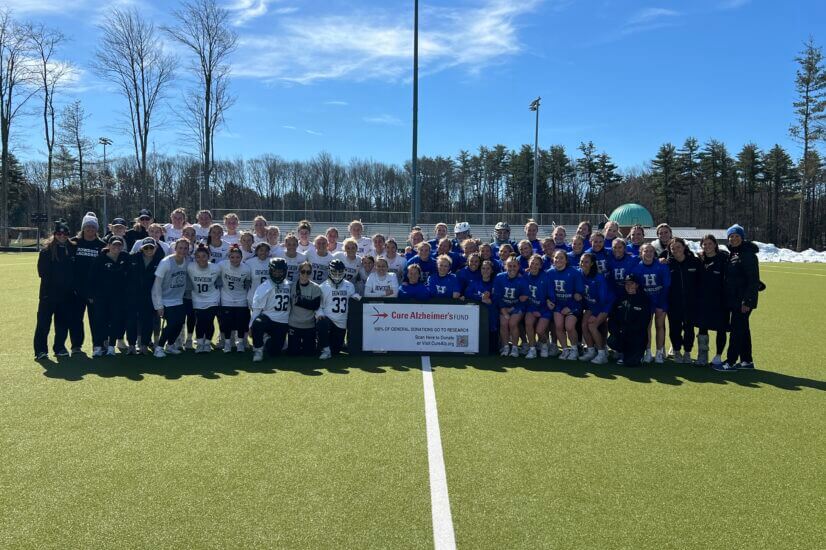
Posted November 25, 2015

Born and raised in St. Louis, Cure Alzheimer’s Fund Research Consortium member David Holtzman grew up with a burning curiosity. At the age of 7 he watched his best friend’s father, a veterinarian, dissect small animals. In grade school he participated in programs at the St. Louis Zoo and Humane Society with his teachers. His passion for biology, anatomy and science, and his academic achievements, led him into the field of medicine, with a focus on neurology, where he has done groundbreaking work. Little did he know when he entered the field that his own family would suffer from the very disease he was dedicating himself to studying.
The oldest of three children, David Michael Holtzman was born to a nurse and an architectural engineer. Growing up, sports were always a big part of his life, especially basketball, which came to him naturally and which he played all through college and into his late 40s. He is now an avid tennis player. But baseball is the family passion. Holtzman watched his first cousin, Ken Holtzman, pitch for 15 years in the major leagues as an all-star for the Chicago Cubs, Oakland A’s, Baltimore Orioles and New York Yankees.
Education
David Holtzman’s parents also stressed the importance of education. “In the early 1950s, when my father was doing his Ph.D. at Washington University in St. Louis, he began teaching twice a week at the night school there, which he continued for over 50 years. I was always motivated scholastically, especially in math and science, and I knew I wanted to be a physician early on,” he says. So after high school he attended a six-year medical program at Northwestern University, graduating in 1985 with an M.D. and a membership in Phi Beta Kappa. He was 23.
Research
Dr. Holtzman wanted to combine his interest in science with his medical training, so he decided to do his postgraduate work at the University of California, San Francisco (UCSF). “They had a great clinical and research program and I had the opportunity to work with people who were doing cutting-edge research in neurology. I had never lived anywhere outside of the Midwest and I was single,” so he began his career there.
After a year as a medical intern, Dr. Holtzman did his residency in neurology at UCSF. “The logic of the anatomy of the nervous system was really compelling—it’s the one field where there’s still not a lot of understanding and not great treatments, yet has some of the most important diseases in human beings, including Alzheimer’s,” Holtzman says. After his residency he became a faculty member in neurology while he continued to treat patients and work as a postdoctoral researcher in the lab of William Mobley, M.D., Ph.D., at UCSF (Mobley is now a member of Cure Alzheimer’s Fund Scientific Advisory Board). During that time, his research focused on understanding neurotrophic factor signaling in the brain as well as trying to develop animal models of Alzheimer’s disease using mouse models of Down syndrome. There, he was honored with a physician-scientist award by the National Institute on Aging (NIA).
In 1994, after almost a decade on the West Coast, Holtzman decided to return “home” to continue his research on Alzheimer’s disease and teach at Washington University. “The opportunity was appealing because of Wash U’s Alzheimer’s disease research center, its Department of Neurology and its superb neuroscience community,” he says. After moving to Washington University, his research began to focus on the neurobiology of APOE, an important genetic risk factor for Alzheimer’s disease. At the same time, some of his family members began to develop the disease he was studying. “My great aunt had died of Alzheimer’s and lived almost 20 years with it. My father’s brother and sister, and finally my father, all became symptomatic—my dad at age 71. He died 10 years later.”
Cure Alzheimer’s Fund
In 2006, Dr. Holtzman’s work on Alzheimer’s disease had become so well known in the field that Dr. Rudy Tanzi, chairman of the Cure Alzheimer’s Fund Research Consortium, approached him about joining the consortium. “Cure Alzheimer’s Fund has some of the best researchers in the field,” says Holtzman. “It’s interesting to talk to other scientific leaders about what needs to be done. I often have ideas I want to test immediately, and with funding from Cure Alzheimer’s Fund I can get pilot data that can turn into a much bigger project. Having quick access to pursue an idea can make all the difference in the work.”
After Dr. Holtzman’s training in neurology, he started a memory clinic for patients with Alzheimer’s disease. Even now, as chair of the Neurology Department at Washington University, he still sees patients once a month, focuses two weeks a year in the hospital seeing neurology patients, and does a morning report—where new admissions to the hospital are presented by the resident physicians to the professors to discuss diagnosis and therapy, once a week. “Experience with patients and with students and residents is both rewarding to me and is very helpful in deciding what questions are important to address in research,” he adds.
Personal Life
Dr. Holtzman remains a fan of sports, especially baseball. When he’s not working, he can be found playing tennis, hiking with his wife Tracy and rooting for his beloved St. Louis Cardinals.





